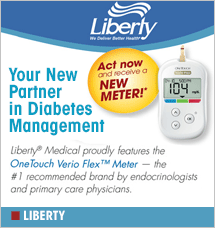Washington Watch
Medicare, Money, Mistakes – Skewed Reporting, Payment Fraud, Cover-ups Still Rampant

 Medicare continues to bleed money, failing to recoup billions of dollars from Medicare Advantage plans it is owed, while also issuing improper payments to hospitals and medical services for elderly care, two new government reports have revealed.
Medicare continues to bleed money, failing to recoup billions of dollars from Medicare Advantage plans it is owed, while also issuing improper payments to hospitals and medical services for elderly care, two new government reports have revealed.
Private Medicare Advantage plans treating the elderly have overbilled the government by billions of dollars, but rarely been forced to repay the money or face other consequences for their actions, a sharply critical new Congressional audit found. The Government Accountability Office (GAO) audit called out Medicare to make “fundamental improvements” to curb overbilling.
The Medicare Advantage plans, an alternative to traditional fee-for-service Medicare, are extremely popular with seniors and currently have more than 17 million people enrolled at an estimated cost to taxpayers of more than $160 billion last year. But detailed investigative reporting by four-time Pulitzer-Prize winner Fred Schulte of the Center for Public Integrity prompted the GAO to scrutinize Medicare’s wasting billions of dollars annually through manipulation of “risk scores.” These scores are a formula meant to pay health plans more for sicker patients and less for healthy people. But the formula often pays too much.
The GAO criticized Medicare’s efforts to recoup overcharges using a secretive, and lengthy, audit process called Risk Adjustment Data Validation, or RADV. Unlike many other anti-fraud programs, RADV has cost the government way more than it has returned to the treasury. The numbers are simply staggering.
Medicare has spent about $117 million on these audits, but so far has recouped just $14 million. But Medicare officials counter that the mere threat of RADV audits has caused health plans to voluntarily return approximately $650 million in overpayments – and that upcoming audits will recover another $370 million more. Critics point out that combined, this is less than 10 percent of the amount that could potentially be recovered.
Since the Center for Public Integrity’s reports, including a series published in October 2014 called “Medicare Advantage Money Grab,” Senate Judiciary Chairman Charles Grassley, R-Iowa, and Sen. Claire McCaskill, D-Missouri, have steadily pressured the federal officials to increase oversight of the Medicare Advantage plans.
Schulte’s reporting noted that since 2004, the risk score formula has largely operated as an honor system, despite criticism that many health plans have overstated how sick some patients are to boost their revenues. That practice is known in medical circles as “upcoding.”
A subsequent report by the Center, using information released through a court order in a Freedom of Information Act lawsuit, found that the overbilling has wasted tax dollars all the way back to 2004 when the risk scores were introduced. A 2005 confidential review of payments found that nearly a third of patients enrolled in 22 health plans weren’t as sick as was claimed, resulting in $4.2 billion in overpayments. Some of these RADV audits have dragged on for years. In fact, GAO found that some audits of 2007 payments to health plans are still under appeal.
What Medicare has never done is impose stiff financial penalties even as evidence built up that billing errors were deeply rooted and wasting tax dollars at an alarming clip. GAO found in its new report that Medicare has still not targeted the worst abusers.
The industry’s trade organization, America’s Health Insurance Plan, argued that an “unconfirmed diagnosis” in an audit doesn’t necessarily mean that the person doesn’t have the disease. The trade group argues that the RADV audit review process has never been complete or “fully tested” to assure that it’s “stable and reliable.”
GAO reviewers noted that Medicare is stepping up the RADV audits but that much more needs to be done. Medicare officials say they have begun auditing Medicare Advantage payments from 2011 and 2012 and have set a goal to have all Medicare Advantage contracts audited annually.
While federal audits have struggled for years to ferret out these overcharges, lawsuits filed by at least half a dozen whistleblowers have accused Medicare Advantage of ripping off the government. The most recent case involves Dr. Mario M. Baez, a south Florida doctor who alleges that insurance giant Humana knew of billing fraud at some clinics in south Florida and did little to stop it. That lawsuit, which was unsealed in February, is pending. Humana has declined to comment on it.
Medicare Wasting $ – Part 2: Improper Payments
In addition to the overbilling issue, the Health and Human Services Department’s Office of Inspector General recently charged that Medicare sent out more than $125 million in improper payments over three years for a plan that insures hospital and medical services for the elderly, including home health care. That report is expected to trigger a congressional review.
Improper payments from the plan, called Medicare Fee-For-Service, exceeded a threshold of 10 percent of total payments from fiscal 2013 through 2015, according to the IG’s report.
After three consecutive years over the limit, the program is required by law to submit plans to Congress for re-authorization or returning to compliance, the report said. These improper payments are most often made in response to insufficient coding or paperwork or when medical need hasn’t been established. But they typically are not fraudulent, argues Patrick Conway, who runs Medicare.
The IG’s report said that HHS failed to address earlier recommendations for reducing the rate and bringing it under the compliance threshold. Improper payment rates in the Medicare Fee-For-Service program were 10.1 percent in 2013, or about $36 billion; 12.7 percent in 2014, or $45.8 billion; and 12.1 percent in 2015, or $43.3 billion, according to the Inspector General’s office. One of the primary causes of these improper payments was insufficient documentation for home health claims.
Medicare’s Conway, in a blog post, argued that Medicare is taking steps to encourage states and organizations to help reduce these improper payments. He noted that he was “pleased” to see the rate of improper payments fell in 2015 from the previous year.
Medical Errors: Third Leading Cause of U.S. Deaths
Everyone has heard the nightmare stories of nurses giving potent drugs meant for one patient to another, or surgeons unintentionally removing the wrong body parts. Now, in case you think those kinds of cases are the exceptions, a new study by patients safety researchers provides some needed, but disturbing context.
The new study, published recently in the British Medical Journal, now called BMJ, shows common “medical errors” may be the third leading cause of death in the U.S., after heart disease and cancer, claiming 251,000 lives every year – more than respiratory disease, accidents, stroke and Alzheimer’s.
Medical mistakes that can lead to death range from surgical complications that go unrecognized to mix-ups with the doses or types of medications patients receive. But no one knows the exact toll taken by medical errors. In significant part, that's because the coding system used by CDC to record death certificate data doesn't capture things like communication breakdowns, diagnostic errors and poor judgment that cost lives, the study says.
“It boils down to people dying from the care that they receive rather than the disease for which they are seeking care,” Martin Makary, a professor of surgery at the Johns Hopkins University School of Medicine who led the research, told the Washington Post recently.
The issue of patient safety has been a hot topic in recent years, but it wasn’t always that way. In 1999, an Institute of Medicine (IOM) study calling preventable medical errors an “epidemic,” shocked the medical establishment and led to significant debate about what could be done.
Makary and his co-author, Michael Daniel, also from Johns Hopkins, did the research to shed more light on a problem they see hospitals and health care facilities intentionally trying to avoid talking about. While all hospitals boast about their patient safety protocols, few provide the public with specifics on actual cases of harm due to mistakes. In fact, the Centers for Disease Control and Prevention does not require reporting of errors in the data it collects about death through billing codes, making it difficult to see what’s going on at the national level. Makary argues the CDC should require these errors to be reported.
The CDC's published mortality statistics, however, count only the "underlying cause of death," defined as the condition that led a person to seek treatment. As a result, even if a doctor does list medical errors on a death certificate, they aren't included in the published totals. Only the underlying condition, such as heart disease or cancer, is counted, even when it isn't fatal.
Dr. Kenneth Sands, who directs healthcare quality at Beth Israel Deaconess Medical Center, an affiliate of Harvard Medical School, said that the surprising thing about medical errors is how little has changed since the 1999 IOM study came out. Only hospital-acquired infections have shown improvement, he said, while “the overall numbers haven’t changed, and that’s discouraging and alarming.”
Other industries that report on errors do a much better job of figuring out the root causes, Sands told the Washington Post. When passengers get on a plane, there’s a standard way attendants move around, talk to them and prepare them for flight, Sands said, yet such standardization isn’t seen at hospitals. That makes it tricky to figure out where errors are occurring and how to fix them. The government should work with institutions to try to find ways improve on this situation, he said.
Makary also used an airplane analogy in describing how he thinks hospitals should approach errors, referencing what the Federal Aviation Administration does in its accident investigations. Every pilot in the world learns from investigations and that the results are disseminated widely. “When a plane crashes, we don’t say this is confidential proprietary information the airline company owns. We consider this part of public safety. Hospitals should be held to the same standards,” Makary said.
But doctors privately acknowledge that it is uncomfortable for a doctor to report that a patient died from a medical error and simply checking a box on a death certificate won’t solve the problem. Instead a better strategy is to educate doctors about the importance of reporting errors. Better tracking would improve funding and public recognition of the problem.
Makary and Daniels noted, in their study, that their estimate of 251,000 deaths annually is probably low. The studies they relied on considered only errors that could be documented in health records, and included only deaths of patients being cared for in hospitals, they said.
One way to get a better picture of the toll of medical errors would be to create death certificates that ask whether a preventable complication in the patient's medical care contributed to the death, the authors wrote. That could help experts predict when and where medical errors are most likely to occur — and take steps to prevent them.
[Also contributing to this report were: the Center for Public Integrity, Bloomberg, Pro Publica, Washington Post, National Public Radio; LA Times.]
Alan Schlein runs DeadlineOnline.com, an internet training and consulting firm. He is the author of the bestselling “Find It Online” books.









































































